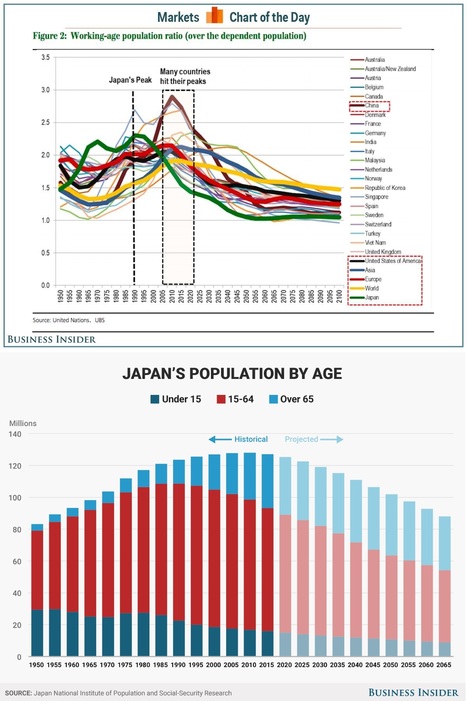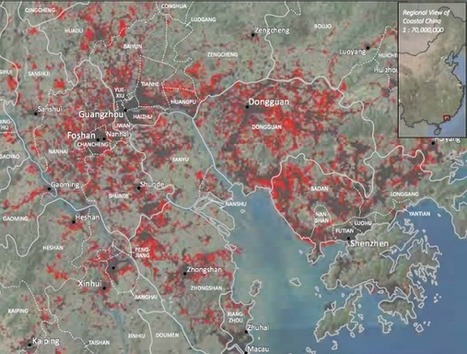Shrinking GDP and a falling population are poised to turn Japan into what economists call a "demographic time bomb," and other countries could be next.
Get Started for FREE
Sign up with Facebook Sign up with X
I don't have a Facebook or a X account
 Your new post is loading... Your new post is loading...
 Your new post is loading... Your new post is loading...
BrianCaldwell7's curator insight,
April 5, 2016 8:13 AM
Cities in this region have experienced spectacular growth; they are at the heart of China's manufacturing and exporting boom. For example, Shenzen was a small city with about 10,000 residents in 1980 but is now a megacity with over 10 million people. China's SEZs (Special Economic Zones). Cities that were once separate entities have coalesced into a large conurbation and if they are counted as one, it's now the largest metropolitan area. Cities like London and New York become global cities over hundreds of years--this happened in one generation. Click here for 5 infographics showing East Asia's massive urban growth. Tags: APHG, urban, industry, manufacturing, economic, unit 7 cities, megacities, China, East Asia. |
Mark Hathaway's curator insight,
November 24, 2015 7:07 AM
The nation that controls the seas, controls the world. Throughout history the leading Naval powers have always been the worlds most dominate nations. The greatest land forces, are no match for the supremacy of the seas. Not even Napoleon could beet back the power of a supreme navy( The British Royal Navy). Since the end of the Second World War, The United States navy has dominated the seas. That domination has made the U.S the worlds greatest nation over the course of the past 75 years. For China to displace the U.S atop the nations hierarchy, they most out due us on the seas. China is ware of this history, and that is why they are heavily investing in their naval technology. The key to the future, as it has been in the past, will be what nation can dominate the worlds seas.
Benjamin Jackson's curator insight,
December 13, 2015 8:23 AM
the growing strength of the Chinese navy is worrying from a military perspective, as during the cold war one of the main reasons they were not considered as big a threat as the Russians was because of their inability to project force beyond mainland china. with their navel improvements this is no longer the case. what this will hold for the future, we can only wait and see. |
















Preliminary HSc - Global challenges: Population
The article headline is quite click-baity, but there is some real substance to this article. The graphs are especially useful to teach concepts such as population momentum and the age-dependency ratio. These were the key parts of the article that caught my eye:
Tags: culture, gender, labor, population, migration, Japan, East Asia.
unit 2 article 1 2